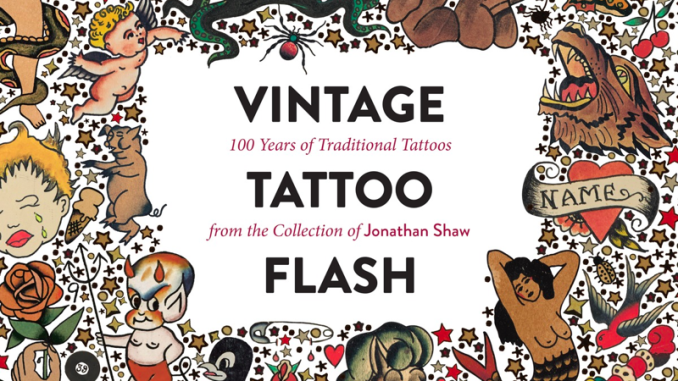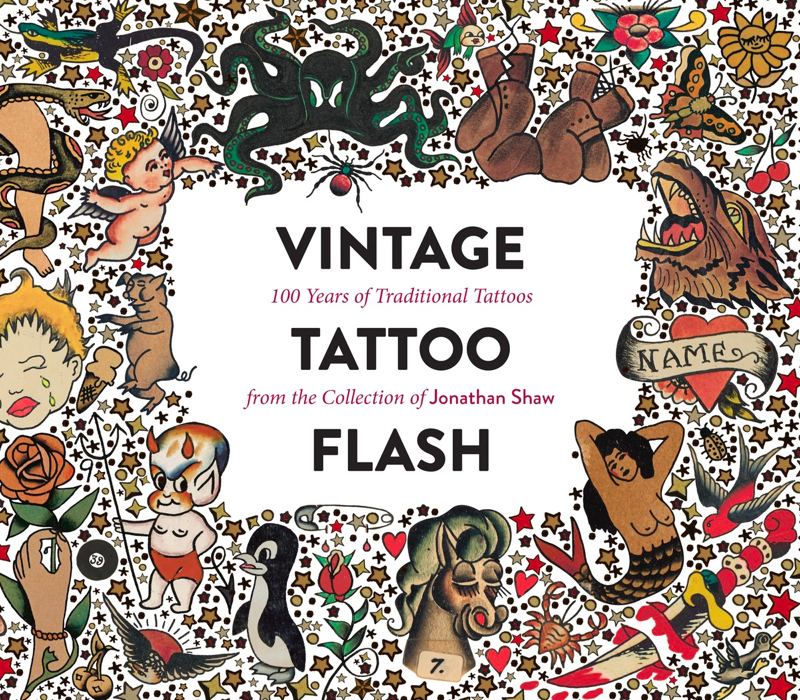
Tattoo flash is the term for the printed or hand-drawn tattoo designs found on the walls and binders of tattoo shops that walk-in customers can select from. Flash is either drawn by individual tattoo artists for display in their own shops, or traded for or bought from other artists and distributors. Once exclusively hand-drawn, original tattoo flash has largely been replaced by professional “flash artists” who sell prints of copyrighted flash at tattoo conventions and online. Vintage, hand-drawn flash is incredibly difficult to come by, and collectors and enthusiasts alike devour any new discoveries of long-lost original flash.

Renowned outlaw tattooist and author Jonathan Shaw owns one of the largest collections of vintage tattoo flash in the world, and Vintage Tattoo Flash is an incredibly rich overview of the early years of American flash art. Vintage Tattoo Flash spans the first roughly 75 years of American tattooing from the 1900s Bowery to 50s Texas, and from the Pike in the 60s to the development of the first black and grey, single-needle tattooing in LA in the 70s. The book lovingly reproduces entirely unpublished sheets of original flash from the likes of Bob Shaw, Zeke Owen, Tex Rowe, Ted Inman, Ace Harlyn, Ed Smith, Paul Rogers, the Moskowitz brothers, and many, many others relatively known and unknown.
Electric tattooing as we know it today was invented in New York City at the turn of the 19th century. In the first days of American tattooing, tattoos were primarily worn by sailors and soldiers, outlaws and outsiders. The visual language of what came to be known as “traditional tattooing” was developed in those early days on the Bowery and catered to the interests of the clientele. Common imagery that soon became canon included sailing ships, women, hearts, roses, daggers, eagles, dragons, wolves, panthers, skulls, crosses, and popular cartoon characters of the era. The first tattooists also figured out that using bold outlines, complimented by solid color and smooth shading, was the proper technique for creating art on a body that would look good forever. In the over 100 years since then, techniques and styles have evolved, and the customer base has expanded, but the core subject matter and philosophy developed at the dawn of electric tattooing has persisted as perennial favorites through the modern era.
Vintage Tattoo Flash by Jonathan Shaw, published by powerHouse Books

Leave a Reply